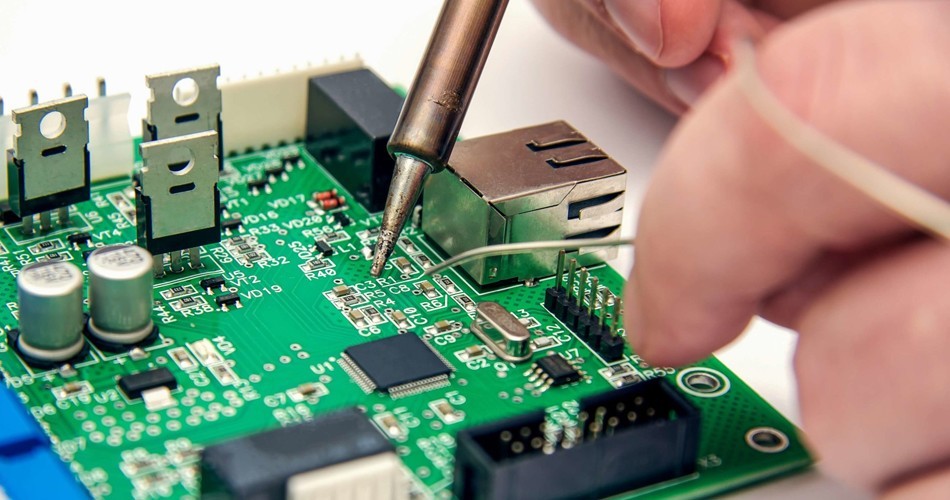What Is Flux and Why Is It Important?
Flux is a chemical cleaning agent used in the soldering process to facilitate the formation of strong, conductive, and durable joints between electronic components and PCB pads. During soldering, metals naturally form oxides on their surfaces when exposed to air. These oxides inhibit solder wetting, which can result in poor adhesion, cold solder joints, or even complete failure of the solder connection.
The main purposes of flux are:
Oxide Removal: Flux chemically removes oxides from the surfaces of component leads and PCB pads, allowing the molten solder to bond directly with clean metal surfaces.
Improved Wetting: Flux reduces the surface tension between the molten solder and the metal surfaces, improving solder flow and promoting uniform wetting.
Prevention of Reoxidation: During heating, flux forms a protective layer that shields the metal from air, preventing further oxidation.
Enhanced Soldering Efficiency: By improving wettability and cleaning surfaces, flux minimizes common defects such as cold solder joints, bridging, and voids.
Without flux, achieving consistent and reliable solder joints—especially in high-density or fine-pitch applications—would be nearly impossible.
Common Types of Flux
Fluxes are typically classified based on their composition, activity level, and residue characteristics. The most widely used types include:
1. Rosin-Based Flux (RO, RMA, RA)
Derived from natural rosin, these are traditional and still widely used fluxes, especially for manual soldering and wave soldering. They are available in several grades:
RO (Rosin Only): Very mild activity, suitable for clean surfaces.
RMA (Rosin Mildly Activated): Moderate cleaning strength with low residue, widely used.
RA (Rosin Activated): Strong cleaning action, but leaves corrosive residues that must be cleaned.
Advantages:
Good thermal stability
Non-conductive when dry
Excellent for manual rework
Disadvantages:
Residues often require cleaning
Not suitable for no-clean environments
2. No-Clean Flux
Formulated with very low solids content and minimal active agents, no-clean flux leaves little or no residue after soldering. These residues are generally non-corrosive and non-conductive, eliminating the need for post-solder cleaning.
Advantages:
Saves time and cost by eliminating cleaning
Suitable for high-reliability applications with space constraints
Disadvantages:
Lower cleaning power than rosin or water-soluble flux
May not be suitable for oxidized surfaces
3. Water-Soluble Flux
These fluxes are highly active and effective at cleaning oxidized surfaces, but they leave behind ionic residues that must be thoroughly cleaned with deionized water after soldering.
Advantages:
Excellent solderability
Effective for fine-pitch and high-reliability applications (e.g., aerospace, automotive, medical)
Disadvantages:
Requires robust cleaning process and equipment
May lead to corrosion or dendritic growth if not cleaned properly
4. Alcohol-Based and VOC-Free Liquid Flux
Commonly used in selective soldering and wave soldering, these fluxes may contain alcohol or be water-based to meet VOC (Volatile Organic Compound) emission regulations.
Alcohol-based: Good solubility, fast drying
VOC-free: Environmentally friendly, but may require specialized application equipment

Choosing the Right Flux: Key Considerations
Selecting the appropriate flux for your assembly process depends on multiple factors. Here are the key aspects to evaluate:
1. Soldering Method Compatibility
Different soldering techniques (manual soldering, reflow soldering, wave soldering, selective soldering) require different flux formulations. For example:
Reflow soldering: Often uses no-clean or water-soluble paste flux
Wave soldering: Typically uses liquid flux (rosin-based or VOC-free)
Hand soldering/rework: Rosin flux pens or gels are preferred
2. Residue Acceptability
In high-frequency or sensitive analog circuits, residue—even non-conductive—can degrade signal quality. In such cases, low-residue no-clean or thoroughly cleaned water-soluble fluxes are recommended.
3. Product Reliability Requirements
Products in aerospace, automotive, or medical sectors often demand extremely high reliability. Water-soluble flux, with post-solder cleaning, is often preferred for such applications due to its aggressive cleaning ability.
4. Cleaning Capabilities
Do you have in-house cleaning equipment? If not, it may be better to use no-clean flux. On the other hand, if your assembly environment allows thorough cleaning, water-soluble flux might offer superior soldering performance.
5. Component and Pad Surface Conditions
Highly oxidized surfaces require more active flux (e.g., RA or water-soluble). For well-preserved and freshly prepared surfaces, mild or no-clean fluxes may be sufficient.
6. Environmental and Safety Regulations
If you're manufacturing in regions with strict environmental regulations (e.g., EU RoHS/REACH), low-VOC or VOC-free fluxes may be required.
Tips for Using Flux Effectively
Always apply the right amount—too much flux can cause residue or bridging; too little may result in poor wetting.
Ensure adequate heating to activate the flux and allow it to fully volatilize or decompose.
In automated processes, monitor flux density and spray consistency to ensure even application.
Store flux properly—many types are sensitive to air, moisture, or UV light.
Conclusion
Flux is not just a supplementary material; it is a core element of the soldering process that determines the quality and performance of electronic assemblies. Understanding the function, classification, and application of flux allows engineers and manufacturers to make informed choices that improve yields, reduce defects, and meet reliability requirements. Whether you're assembling consumer electronics or mission-critical aerospace systems, selecting and using the right flux is a key step in achieving soldering excellence.